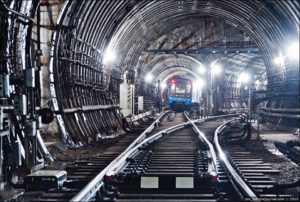 The European Bank for Reconstruction and Development has issued an Invitation to Prequalification for Kharkiv metro extension in the southern part of the city. The prequalification documents must be delivered before 20 April 2020.
The European Bank for Reconstruction and Development has issued an Invitation to Prequalification for Kharkiv metro extension in the southern part of the city. The prequalification documents must be delivered before 20 April 2020.
The project consists of the construction of a 3.47 km metro line and 2 stations with platforms in length of 104 metres. The Derzhavinska is a shallow station located on the east side of Gagarin Avenue, partially on a private development area. Access to the underground station’s halls from opposite sides of the Gagarina Avenue is ensured by a passageway underneath Gagarina Avenue. The future Odeska station is located under the Gagarina Avenue in the area of Odesskaya and Herojev Stalingrada streets. It will function as an end station with 4 tracks for turn-around. Access to the underground station halls from opposite sides of the Gagarina Avenue is ensured by a passageway underneath the Gagarina Avenue.
The tender includes track works and the supply and installation of electromechanical equipment and integration of this equipment into existing metro system. The project is estimated to be completed within 4 years.
The works for the assignment shall commence in the second quarter of 2021.
Prequalification and tendering for contracts are funded by the EBRD and the European Investment Bank, which together are supporting the project with a EUR 320 million financing package. In 2017 the EIB has provided EUR 160 million to finance improvements to the public transport system of Kharkiv, including the metro expansion.
The extension of the Green Line (Line 3) towards Odeska includes also the construction of a new depot with a capacity for 100 metro cars (20 trains) and the renewal of the fleet by purchasing 85 new rolling stock units, making up 17 five-car trains.
The project will improve public transport in Kharkiv by extending the metro network and making it more attractive for commuters. It is expected that the investment will result in a modal shift away from private car use, thus reducing the negative impact of car transport on the environment.
Share on:



